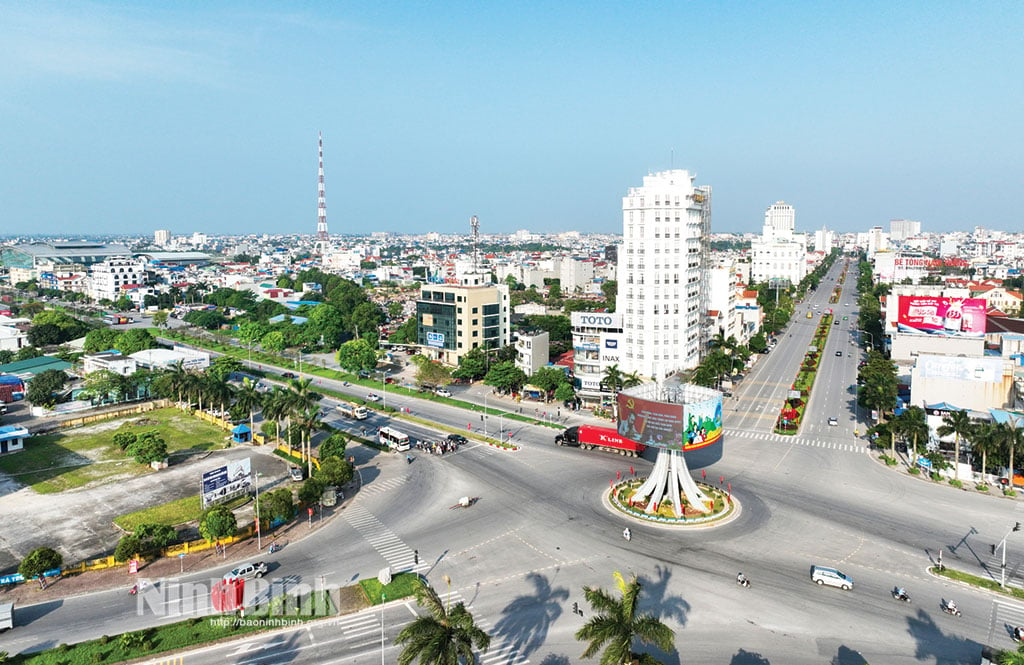
Digital economy - the pillar of creating a sustainable development model
In the Fourth Industrial Revolution, the digital economy has become a strategic pillar, helping localities improve their competitiveness and open up new development models. With the available foundations, Ninh Binh is facing a historic opportunity to form a large-scale digital economic development space, capable of becoming a new growth pole of the Red River Delta.
Ninh Binh’s potential for digital economic development can be seen from many aspects. First of all, the expanding market size creates conditions for the synchronous deployment of data platforms, e-commerce, digital finance, smart logistics and online public services. A large-scale administrative unit will help save on infrastructure investment costs, while increasing its attractiveness to technology corporations and investors.
At the same time, Ninh Binh has strengths in processing industry, logistics, young human resources, and a developed education system, creating conditions to become a center for training digital human resources and innovation. Tourism and services also have great potential for applying digital technology, enhancing value through smart tourism, e-commerce, and modern management. Thanks to that, Ninh Binh can become a center for digital services, benefiting from the national policy of considering the digital economy as a key driving force.
However, the province still faces many challenges: the difference in development levels between regions, the limitation of high-quality digital human resources, uneven technology infrastructure in rural and mountainous areas, and the low level of technology application by businesses and people. These barriers require reasonable coordination policies, synchronous investment and long-term vision to ensure a sustainable digital transformation process.
According to the orientation for the period 2026 - 2035, Ninh Binh strives for the digital economy to account for 30% of GRDP by 2030 and 40-45% by 2035. The province needs to organize a multi-center development space, taking advantage of its advantages in industry, logistics, education, tourism and services. The focus is on building an integrated data system, connecting the country, considering data as a strategic asset; investing in synchronous digital infrastructure, 5G coverage, developing data centers and cloud computing platforms. At the same time, it is necessary to train digital skills for the entire population, support small and medium-sized enterprises in digital transformation with appropriate financial, tax and infrastructure mechanisms. Priority areas such as smart tourism, e-commerce associated with agricultural products and OCOP products, digital logistics, and online public services need to be deployed quickly, creating a comprehensive spread.
It can be affirmed that, with its potential and advantages, Ninh Binh is facing the opportunity to shape a multifunctional and well-connected digital economic space. If going in the right direction, Ninh Binh can completely become a typical model of digital economic development, contributing to the realization of national goals.
Prof. Dr. TRAN THO DAT
(Chairman of the Council of National Economics University)
Building superior policies for innovation
Science and technology (S&T) development and innovation are becoming the core driving force for sustainable growth. For Ninh Binh, the issuance and implementation of outstanding and breakthrough policies in this field is an urgent requirement.

First of all, the province needs a special tax incentive mechanism for innovative start-ups, science and technology organizations and investors. Exempting corporate income tax for 5 years for start-ups, deeply reducing taxes for investors contributing capital, exempting personal income tax for experts, scientists and talents at innovation centers will become a "magnet" to attract capital and high-quality resources.
Second, to reduce the cost burden, direct financial support policies are needed: the state budget supports part of the costs of project incubation, hiring experts, and technical services; and at the same time reduces up to 70% of public space rental fees for innovative businesses. This is a lever to help ideas quickly come into practice.
Third, the province needs to boldly implement the sandbox mechanism (controlled testing) in high-tech zones and concentrated information technology zones. Sandbox allows testing of new technologies and models, from venture capital to advanced digital applications. If implemented transparently and effectively, Ninh Binh can become a "policy laboratory", attracting large corporations such as NVIDIA, while promoting local businesses to participate more deeply in the global value chain.
Fourth, to maintain its long-term attractiveness, Ninh Binh needs to build a comprehensive innovation ecosystem, connecting talent - capital - market - services. Attracting domestic and foreign talent must be central, through special visa policies, career incentives, and a favorable research and business environment. When freed from administrative barriers, talent will wholeheartedly devote themselves to local development.
Finally, to ensure resources, the province needs to promote the socialization of investment in science and technology. The public-private venture capital fund model (PPP) is the right direction: the State plays the role of "seed capital", the private sector participates in the product commercialization stage. At the same time, a private science and technology fund is formed, allowing institutes and schools to cooperate according to business orders, linking research with application.
In short, Ninh Binh cannot rely solely on common policies to make a breakthrough in science and technology, but needs superior, different and pioneering mechanisms. Preferential tax policies, direct financial support, sandbox mechanisms, building an innovation ecosystem and mobilizing social resources are five important pillars. If implemented synchronously and consistently, Ninh Binh can completely create a creative and dynamic startup environment, becoming an attractive destination on the national and regional technology map.
Dr. Ha Huy Ngoc
(Vietnam and World Economic Institute,
Vietnam Academy of Social Sciences)
Establishing core values to reach international tourism brands
In the process of modern tourism development, destination brands cannot rely solely on natural resources or existing heritage, but must be positioned on the basis of core values and distinct identities. For Ninh Binh, especially in the context of the merger of three provinces, identifying and promoting unique values has become an urgent requirement to create a strong brand with national and international influence.

Photo: Minh Duong
Ninh Binh has a rare advantage with three layers of value: nature, culture and spirituality. Trang An Heritage - the only complex in Vietnam recognized by UNESCO as a mixed heritage - together with Bai Dinh Pagoda has created a symbol of eco-spiritual tourism. When connecting with centers such as Tam Chuc Pagoda, Tran Temple, Ninh Binh forms a "spiritual flow" bearing the imprint of the Red River civilization, both associated with the locality and having international influence. This is the foundation for Ninh Binh to position itself differently from other destinations in the country.
Positioning Ninh Binh as “Vietnam’s Buddhist Capital, Asia’s leading spiritual and cultural tourism center” not only has a scientific basis but also has profound practical value. This approach helps Ninh Binh join the international spiritual tourism network, connecting with major centers such as Bodh Gaya (India), Lhasa (Tibet), Koyasan (Japan), Chiang Mai (Thailand), thereby raising its regional status.
To realize the vision, Ninh Binh needs to build a systematic brand development strategy, synchronous between planning - infrastructure - products - communication - management. Planning must combine landscape conservation with investment in modern infrastructure, accommodation facilities and services that meet international standards. Spiritual tourism products need to be creative, combining cultural industry, applying digital technology and organizing large-scale festivals to create long-term attraction.
The media plays a breakthrough role. Ninh Binh needs to promote its brand to the world through global campaigns, cooperating with prestigious channels such as National Geographic, BBC Travel, Discovery. At the same time, take advantage of cinema, digital art, virtual reality to bring authentic experiences, helping tourists "live with heritage".
A decisive factor is smart destination management. The application of big data in forecasting and regulating the number of visitors will optimize the experience and ensure sustainability. In particular, the local community must be considered the center - both the subject of preserving identity and the person spreading pride and benefiting from tourism development.
Correctly identifying core values is the key for Ninh Binh to enter a new stage of development. With a creative approach, sustainable strategy and social consensus, Ninh Binh can absolutely become a new symbol of Vietnamese tourism, reaching international standards.
Dr. Architect Nguyen Thu Hanh
(Chairman of the Association of Science for Sustainable Tourism Development)
Five key pillars in Ninh Binh's breakthrough strategy
In the development map of the Red River Delta, the northern and eastern poles have been clearly defined, but the southern poles are still open. With a strategic location right at the gateway to Hanoi, possessing unique natural landscapes, abundant industrial land funds and increasingly complete connecting infrastructure, Ninh Binh province has the conditions to become the southern growth pole of the region.
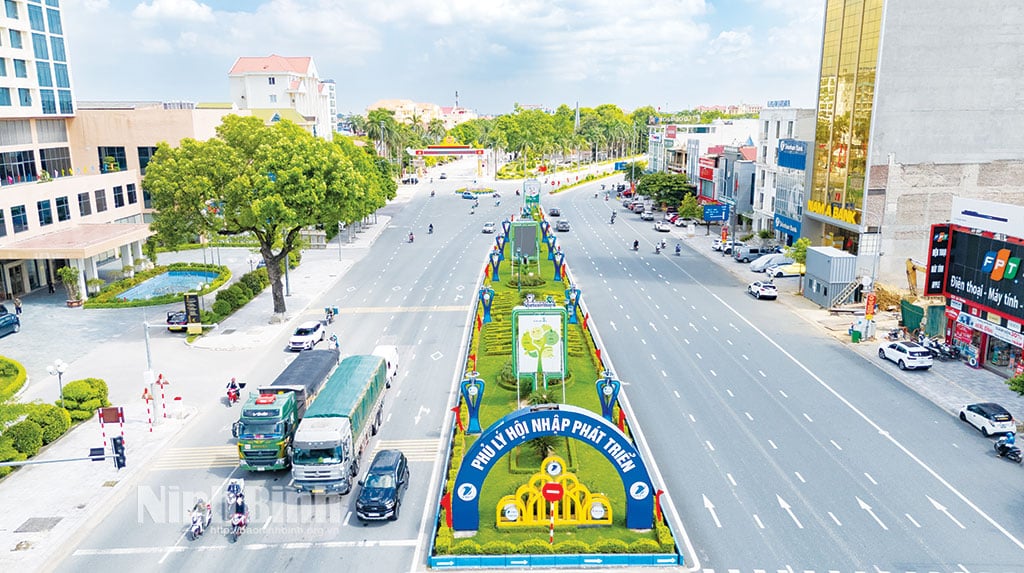
dynamic, with wide open roads and bustling commercial activities.
Photo: Ngoc Linh
The completed North-South Expressway and the upcoming Hanoi-Ninh Binh high-speed railway will shorten the travel time from Hanoi to less than 25 minutes. This is the “golden key” for Ninh Binh to become a dynamic “extended suburb” of the capital, ready to welcome a new influx of residents, high-quality human resources and investment waves. To take advantage of the opportunity, Ninh Binh needs a breakthrough strategy with five key pillars.
Firstly, develop a TOD model associated with a high-speed railway station, with three-layer planning: commerce - services within a radius of 800m, residential - education - healthcare within 3km and an ecological and resort belt further away, forming a "30-minute suburb" to attract residents and investment.
Second, build “Trang An Science City”, a science and innovation urban area, focusing on universities, research institutes, high-tech enterprises, and a startup ecosystem; become a “magnet” attracting brainpower, creating a breakthrough in productivity and creativity.
Third, promote circular ecological industry. Ninh Binh can develop green industrial zones, prioritizing electric vehicles, batteries, robots, and high-tech components; by 2030, strive for 40% of production value from medium and high-end industries and reduce carbon emission intensity by 25% compared to 2020.
Fourth, exploiting coastal potential to develop green industry and international tourism: hydro steel smelting, deep-water seaport, shipyard, international passenger port; creating a "sea - mountain - river" connection chain, putting Ninh Binh on the global tourism map.
Fifth, shaping the brand associated with nature through the project "Day River Greenway" 45km from Tam Chuc - Trang An - Tam Diep with bicycle lane, marina, night market, resort; promoting the brand "River - mountain - sea tourism in one round", extending the stay from 1.5 to 3 days, increasing tourism revenue by at least 50%.
If these five strategies are implemented synchronously, they will help Ninh Binh create a true growth pole: high-tech industry, innovative science, marine logistics and eco-tourism, all linked in a green economic ecosystem.
The prerequisites for success are political determination, strong regional coordination mechanisms and smart incentive policies. The golden window will only last for the next few years, before the high-speed railway rolls out and the investment wave explodes. If exploited, Ninh Binh will not only become a passive “satellite” of Hanoi, but will also rise to become an “integrated megacity” where green economy, high technology and culture and nature intersect, contributing to leading the next stage of sustainable development of the Red River Delta.
NGUYEN DO DUNG
(General Director of enCity Urban Solutions PTE. LTD, Singapore)
Source: https://baoninhbinh.org.vn/ninh-binh-tren-hanh-trinh-kien-tao-cuc-tang-truong-moi-cua-vung-dong-bang-song--250928223212839.html







![[Photo] Hanoi morning of October 1: Prolonged flooding, people wade to work](https://vphoto.vietnam.vn/thumb/1200x675/vietnam/resource/IMAGE/2025/10/1/189be28938e3493fa26b2938efa2059e)




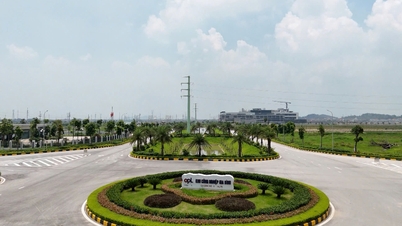
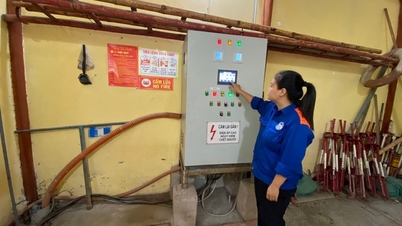









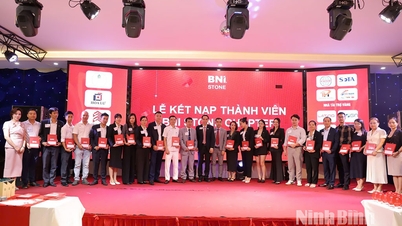
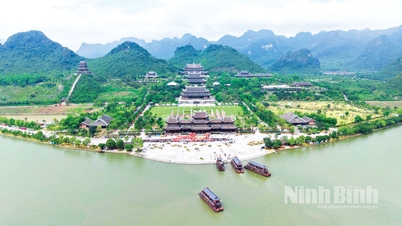




![[Photo] President Luong Cuong receives President of the Cuban National Assembly Esteban Lazo Hernandez](https://vphoto.vietnam.vn/thumb/1200x675/vietnam/resource/IMAGE/2025/9/30/4d38932911c24f6ea1936252bd5427fa)
![[Photo] Panorama of the cable-stayed bridge, the final bottleneck of the Ben Luc-Long Thanh expressway](https://vphoto.vietnam.vn/thumb/1200x675/vietnam/resource/IMAGE/2025/9/30/391fdf21025541d6b2f092e49a17243f)


























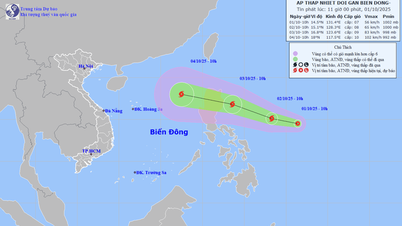












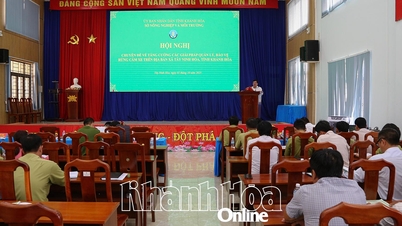



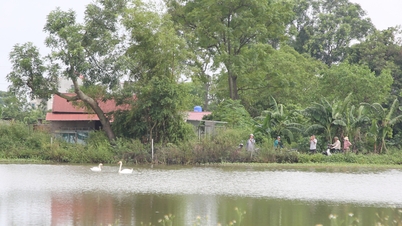


















Comment (0)